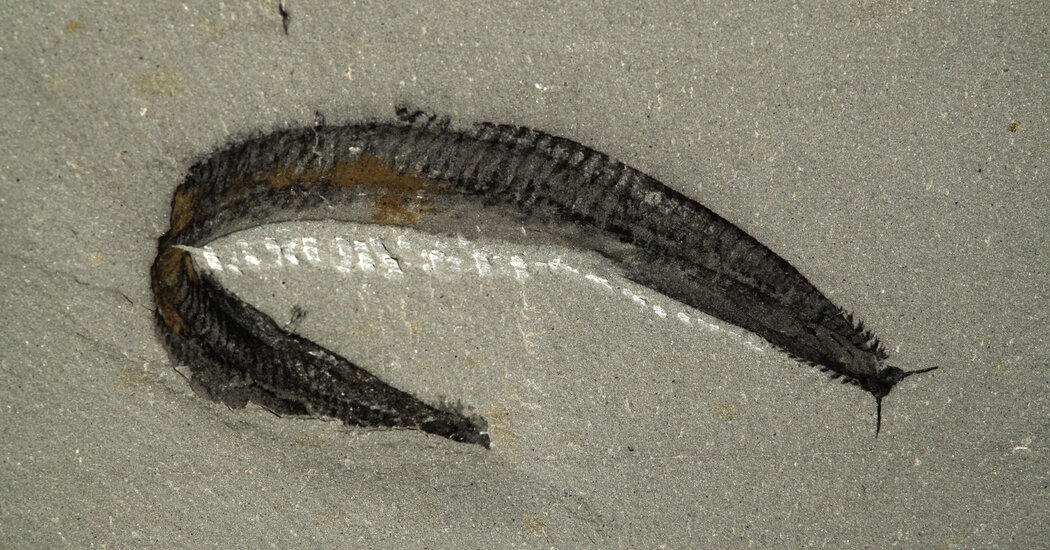Researchers have long assumed that a tube in the famous Pikaia fossil ran along the animal’s back. But a new study turned the fossil upside-side down.
Over the past 500 million years, vertebrates have evolved into a staggering variety of forms, from hummingbirds to elephants, bullfrogs to hammerhead sharks, not to mention our peculiar species of upright ape. But underneath all that diversity, vertebrates share some key features.
We all have a backbone made of vertebrae, for example, along with a skull that houses a brain. We share these hallmarks because we all descended from a common ancestor: a fish that swam in the Cambrian seas.
But when paleontologists look farther back in time, the story gets confusing. The fossils of early animals reveal a menagerie of strange creatures with puzzling bodies and unfamiliar appendages. “They just looked like freaky beasts,” said Jakob Vinther, a paleontologist at the University of Bristol.
In study published on Tuesday, Dr. Vinther and his colleagues offered a provocative theory for how some of those freaks gave rise to us. Central to their argument is an inch-long, ribbon-shaped creature that lived 508 million years ago. Paleontologists have been arguing for decades about that ancient swimmer, known as Pikaia. Now, Dr. Vinther and his colleagues argue that previous researchers were led astray by looking at Pikaia upside down.
Pikaia came to light in 1910, among a wealth of early animal fossils that Charles Walcott, an American paleontologist, discovered in the Canadian Rocky Mountains. Walcott concluded that Pikaia was a polychaete, or marine worm, pointing to the short, fleshy appendages hanging down from the front end of its body. Living polychaetes have similar appendages along the full length of their body, which they use to swim or crawl.
But nearly seven decades later, Simon Conway Morris, a British paleontologist, argued that Pikaia wasn’t a worm. Pointing to the bundles of muscles that ran the length of the animal’s body, he proposed that Pikaia was instead a close relative of vertebrates. “Pikaia may not be far removed from the ancestral fish,” he wrote in 1979.
